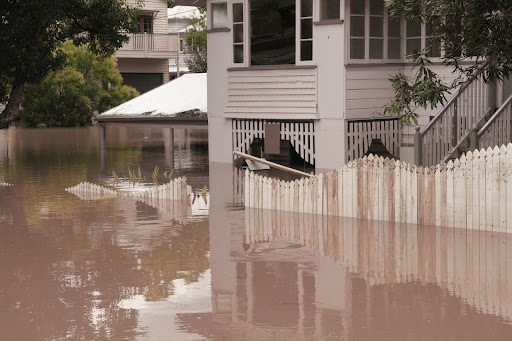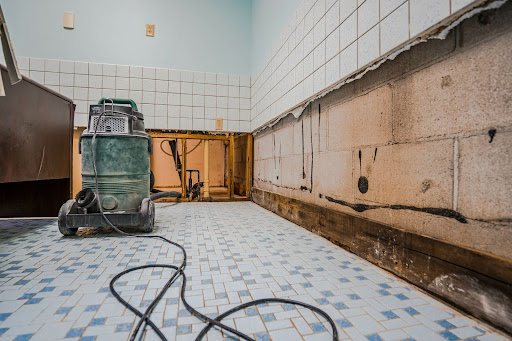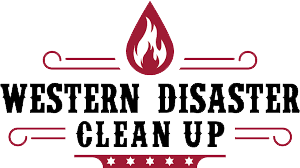Facing the aftermath of a flood is a daunting experience, and it’s during these moments that having the right insurance coverage becomes invaluable. Flood clean-up and insurance are closely intertwined, and understanding their relationship can make all the difference for homeowners dealing with the aftermath of such a disaster.
In this article, we’ll provide you with essential information to help you navigate the challenges that come with flood damage. We’ll explore what flood insurance typically covers, factors that influence coverage, and the critical steps you need to take in the wake of a flood. We’ll also address some common misconceptions about flood insurance and offer practical advice on handling the clean-up process and interacting with your insurance provider.
By the end, you’ll be better equipped to understand flood insurance and be prepared for any unfortunate flooding incidents.
What is flood insurance?
Flood insurance is your safety net for protecting your home and belongings from the devastation of floods. It’s a specialized insurance policy that can be a lifeline in times of disaster. It differs from regular homeowners insurance in some very specific ways.
While homeowners’ insurance covers a range of perils like fire, theft, and windstorms, flood insurance focuses solely on safeguarding your property against flood-related damages. Without flood insurance, you may find yourself facing overwhelming financial burdens when attempting to recover from the aftermath of a flood.
When it comes to flood insurance, there are generally two types to consider.
First, there’s the National Flood Insurance Program (NFIP), managed by the Federal Emergency Management Agency (FEMA). This program offers flood insurance to homeowners, renters, and business owners in participating communities. NFIP policies usually cover both the structure and the contents of your property, but it’s important to note that there are coverage limits, and certain types of property might not be fully covered.
The second type of flood insurance is provided by private insurance companies. These policies often come with more extensive coverage options and higher limits compared to NFIP policies. However, the specifics of private flood insurance can vary widely in terms of coverage and cost, so it’s crucial to thoroughly examine and compare your options to find the best fit for your unique needs.
Understanding the distinct purpose of flood insurance, the types of policies available, and how they differ from homeowners’ insurance equips you to make informed decisions about your insurance coverage. In times of flooding, having the right insurance can make all the difference in your ability to recover and rebuild.

What flood insurance typically covers
Flood insurance policies are designed to address two main categories of damage: structural damage to your property and personal belongings.
Structural damage coverage
Flood insurance typically covers damage to the structure of your home, including its foundation, walls, floors, roof, built-in appliances, and electrical and plumbing systems. This coverage is critical because it helps you repair or rebuild your home in the event of severe flood damage.
Personal property coverage
In addition to structural damage, flood insurance also includes coverage for your personal belongings. This can encompass a wide range of items, including furniture, electronics, clothing, and even certain valuable items like artwork. It’s important to take inventory of your possessions and understand how much coverage you’ll need to protect them adequately.
Now, it’s important to note that while flood insurance provides vital protection, there are exceptions and limitations to coverage that you should be aware of:
Coverage Limits
Both National Flood Insurance Program (NFIP) policies and private flood insurance policies have coverage limits. For NFIP policies, the maximum coverage limit for structural damage is $250,000, and for personal property, it’s $100,000. If your property’s value exceeds these limits, you may need to consider supplemental coverage through a private insurer.
Exclusions
Flood insurance doesn’t cover everything. Common exclusions include damage caused by moisture, mildew, or mold that could have been prevented by the property owner, as well as additional living expenses if your home becomes uninhabitable due to a flood. It’s crucial to review your policy to understand these exclusions.
Basement Coverage
Coverage for basements and the contents within them can be limited. While structural damage in basements is covered, personal property coverage in basements is often restricted. This is something to keep in mind, especially if you have a finished basement.
It’s essential to tailor your coverage to your property and belongings, ensuring adequate protection in the event of a flood.
Factors affecting flood insurance coverage
There are some important factors that shape flood insurance coverage and influence your policy.
Location and Flood Zone Designation
Where your property is situated plays a significant role in flood insurance. Flood zones are geographical areas categorized by their susceptibility to flooding. These zones dictate the level of risk associated with your property and subsequently influence your insurance terms and premiums.
High-Risk Zones
If your property resides in a high-risk flood zone, like Zone A or V, it implies a greater likelihood of flooding. Consequently, insurance premiums tend to be higher in these areas due to the elevated risk. Moreover, high-risk zones often come with stringent building requirements to mitigate potential damage.
Moderate-to-Low Risk Zones
In contrast, properties located in moderate-to-low-risk flood zones, such as Zone B, Zone C, or Zone X, generally face lower insurance premiums. While the risk is comparatively lower, it’s important to note that flooding can still occur in these areas. Thus, considering flood insurance remains a prudent choice even if it’s not mandated.
Government Assistance Programs and Requirements
The government plays a crucial role in flood insurance. Assistance programs like FEMA can provide financial aid during federally declared disasters, often in the form of low-interest loans. However, these loans may not cover all losses.
Many lenders, especially federally regulated ones, also require flood insurance for properties in high-risk flood zones. Even if not mandated, opting for flood insurance is wise to protect your home and belongings, ensuring the right level of coverage and peace of mind against potential flooding risks.

Common Misconceptions About Flood Insurance
1. “I’m Not in a High-Risk Area, So I Don’t Need Flood Insurance”
It’s a prevalent belief that only properties in high-risk flood zones require flood insurance. However, floods can happen anywhere, and roughly one-fifth of flood insurance claims originate from areas outside these high-risk zones. This emphasizes the importance of considering flood insurance regardless of your location.
2. “Flood Insurance Covers Everything”
While flood insurance offers comprehensive coverage, it’s vital to recognize that it doesn’t encompass all types of damage. For instance, it often excludes damage to fences, swimming pools, and detached structures. Familiarizing yourself with your policy’s coverage limitations is essential.
3. “Flood Insurance Only Covers Natural Flooding”
Flood insurance isn’t restricted solely to natural disasters like river or coastal floods. It extends its coverage to various scenarios, including flash floods, heavy rainfall, and even sewer backups that result in indoor flooding. Understanding that different water-related incidents can be covered is crucial.
4. “Flood Insurance Includes Temporary Living Expenses”
Flood insurance primarily focuses on property and contents damage. It typically doesn’t include coverage for additional living expenses if you need to relocate temporarily during repairs. Discussing this aspect with your insurance provider and exploring additional coverage options if necessary is advisable.
5 “I Can Buy Flood Insurance Anytime”
Although you can purchase flood insurance anytime, there’s typically a waiting period before the coverage becomes effective. This waiting period usually spans 30 days. Therefore, it’s prudent to plan ahead and secure coverage well in advance of flood season or potential risks.
Remember that reliable information and proactive dialogue with your insurance provider are pivotal to securing appropriate flood insurance.

Western Disaster Clean Up
When disaster strikes and flood damage threatens your home, contact Western Disaster Clean Up. With our help, you can confidently face the challenges of flood clean-up, knowing you have a trusted partner by your side.
In times of crisis, having the right information and professional support can make all the difference. Choose Western Disaster Clean Up for a partner dedicated to helping you recover and restore your property after a flood.
Call us anytime, 24/7 at 385-381-6266.

